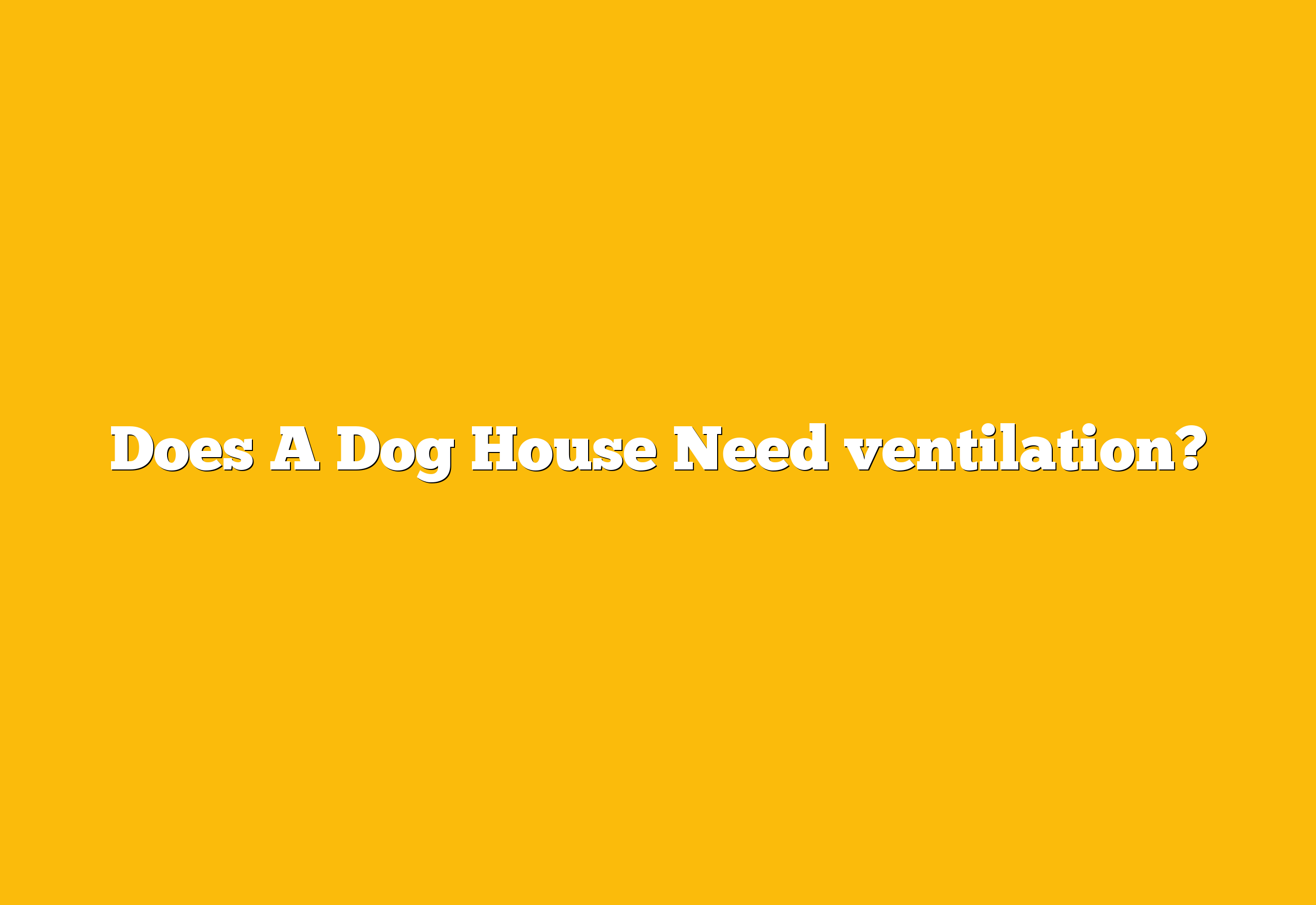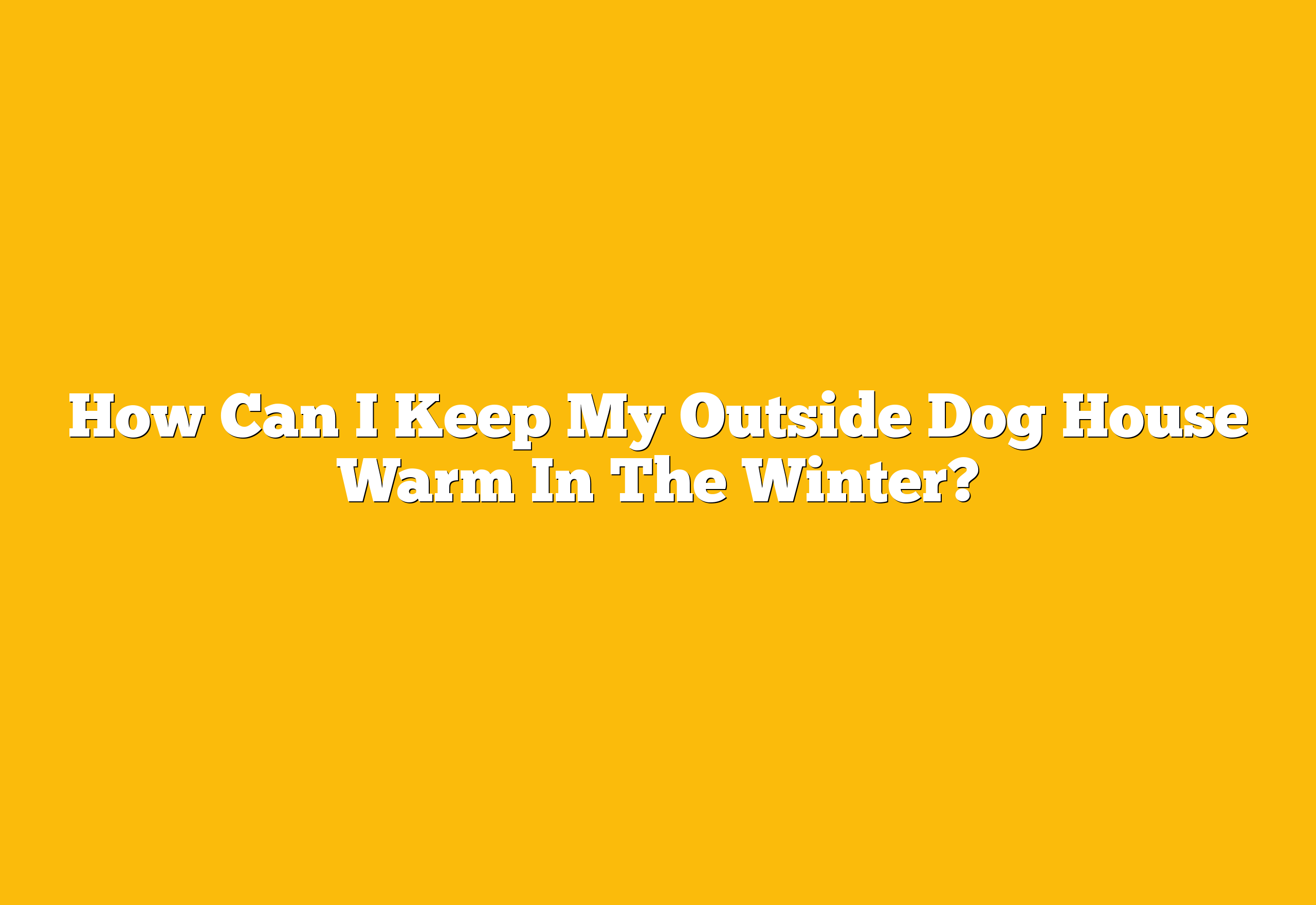Yes, A dog house does need ventilation in order to protect pets from extreme temperatures and humidity. Without proper ventilation, the inside of a dog house can become too hot in the summer or too cold in the winter. This can cause a range of health problems for your pup, such as overheating, respiratory problems, and discomfort.
Good ventilation is especially important if you live in an area with high levels of humidity or areas that experience extreme temperatures. To ensure that your pup’s house is well-ventilated, it should have multiple openings on at least two sides of the structure to allow air to move freely throughout the space. Additionally, consider installing a fan or other mechanical device to help circulate air when needed.
Poor ventilation can lead to many issues for your pup. In warmer climates, inadequate ventilation can cause heat stroke due to rising temperatures within the dog house and prolonged exposure to direct sunlight. In colder climates, an insufficiently ventilated dog house will result in more drastic temperature drops overnight and during periods of snowfall which could be dangerous for your pup’s health. Poorly ventilated living spaces also make it difficult for animals to cool off during hot days, resulting in discomfort and distress.
Factors for Good Ventilation
Good ventilation in a dog house is essential to ensure the well-being of your pup. The air quality within the house needs to be kept as fresh and healthy as possible. Factors that contribute to good ventilation include ensuring air flows freely and has an adequate supply of oxygen, having enough small openings for air circulation, positioning the house in a spot where it is exposed to direct sunlight, and avoiding overcrowding with multiple animals.
When it comes to oxygen, having a few strategically placed vents in the roof or walls can help ensure there’s a steady supply of oxygen moving through the house. This will prevent toxins from building up inside which could be harmful for your pup. Additionally, allowing air to flow freely between different areas of the house will reduce humidity levels and keep everything relatively dry inside.
Direct sunlight is also beneficial when it comes to providing good ventilation within a dog house, as it will help keep temperatures cooler on hot days, while making sure stale air is replaced by fresher outdoor air. It’s important not to position the dog house in shaded spots where air won’t move as freely because this can lead to stagnant conditions that aren’t safe for your pup. If you’re unable to place your pup’s house in an area with direct sunlight, consider using fans or other creative solutions that optimize airflow within their living space.
Finally, if you plan on housing multiple dogs in one doghouse make sure there’s adequate space for each one so they’re not overcrowded. Poor ventilation due to overcrowding can cause issues like poor air quality or even illnesses related to poor hygiene conditions so it’s best avoided whenever possible.
Impact of Poor Ventilation
The impact of poor ventilation in a dog house can be severe for the health and wellbeing of your pet. Lack of air circulation can create a humid, stuffy environment which can lead to respiratory issues and other health problems like heat stroke. Poor ventilation can also reduce the lifespan of the dog house, as the buildup of moisture inside can cause mold, mildew and rot. If not addressed, this could eventually cause structural damage to both the interior and exterior of the dog house.
Poor ventilation in a dog house will also increase the risk of pests such as fleas, ticks, lice, mites and other insects that thrive in damp environments. This could not only result in your pup getting infested but could also spread disease throughout your home if they are able to get inside. Additionally, these pests may seek out an alternate source of food if there is no air flow in the dog house; meaning they may start snacking on your pet’s bedding or food bowls instead!
Not having proper ventilation in a dog house could also lead to an unpleasant smell due to bacteria and other germs that build up without air circulation. Even worse, it could become quite uncomfortable for your four-legged friend if it gets too hot or stuffy inside their home – especially during summer months when temperatures are at their highest.
Conclusion
In conclusion, a dog house does need ventilation in order to ensure the health and wellbeing of your pup. Factors such as air circulation, temperature control, humidity control, and air quality are all important considerations when providing adequate ventilation for your pup’s home. Poor ventilation can be detrimental to your pet’s health and can lead to serious issues such as respiratory problems, overheating, mold growth, or other health risks. With proper care and attention to detail, you can provide your pup with a healthy and comfortable home environment that is suitable for their needs.





Leave a Reply